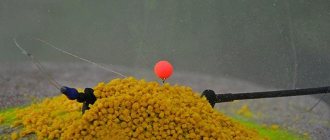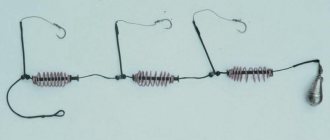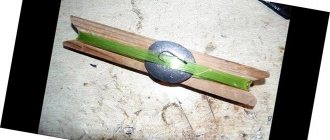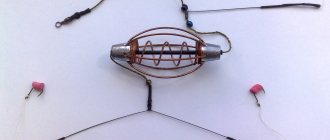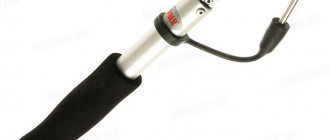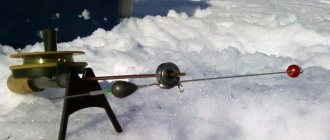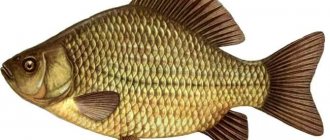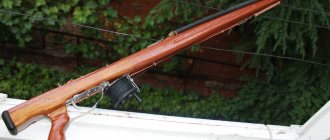Net
with a feeder.
Fishing tackle review. How to catch
.
minigrid with feeder Chinese version
Russified annotation on fishing with a mininet with a feeder
At the moment, there are many offers on the Internet for the sale of a small net with a feeder.
, which can be thrown either manually or using a spinning rod. with all this, the fish swimming up to the feeder, swimming around the bait, at a theoretical level should get entangled in this net. How to fish with this gear carefully is not described anywhere. It is only reported that it is necessary to press complementary food into the spring feeder (a special mixture for bait, in other words, simply millet, pearl barley porridge) and, throwing the tackle in shallow water, wait for a “bite”.
Because the design of the tackle is ordinary, you can make it yourself using a feeder feeder and a piece of net fabric about 1.5 meters in size, or you can purchase it from the Chinese via the Internet, where its price ranges from 30 to 80 rubles per piece.
Characteristic data
Do-it-yourself fishing feeder has a lot of varieties. Depending on the characteristic data, a gradation was created.
According to the size of the feeder there are:
- small, used when fishing for small-sized fish, for example, crucian carp, roach, bream;
- average;
- big.
The last two variations are used when fishing for carp.
As for the weight of the fishing feeder, it depends on the place chosen for fishing. So, if fishing is carried out during the current, the feeder is made heavier. Fastening is carried out on feeder or carp tackle.
Depending on the type of bait holding, feeders are:
- closed, in which live food is placed;
- open, filled with porridge or plant food;
- winter ones, from which food falls to the bottom of the reservoir.
There is also a division according to shape and material.
Reviews from fishermen
The Findfish feeder-trap has received different reviews, but the vast majority of them are positive. This is what they say about it in the fishing community.
Now there are many offers on the Internet for the sale of a small net with a feeder , which can be cast either manually or using a spinning rod. At the same time, fish swimming up to the feeder and swimming around the bait should theoretically become entangled in this net. How to fish with this gear is not described in detail anywhere. It is only reported that you need to press complementary food into the spring feeder (a special mixture for bait or just millet or pearl barley porridge) and throw the tackle in shallow water and wait for a “bite”.
minigrid with feeder Chinese version
Since the design of the tackle is simple, you can make it yourself using a feeder and a piece of net fabric about 1.5 meters in size, or buy it from the Chinese via the Internet, where its cost ranges from 30 to 80 rubles per piece.
Bottle fishing feeder
An ideal option for catching bottom fish (carp, carp, catfish, bream), which prefer to look for food in the ground, would be a model known as a “nipple”. Such a fishing feeder can easily be made from a cork from a drinking water container. To complete the work, you only need a plastic base, a piece of lead, a winding ring, and a hole punch in the form of a nail or an awl.
First, a flat sinker is placed at the bottom of the cork, which can be made from sheet metal. To fix the weighting agent, it is enough to make through holes in the product, into which a strong, pliable wire is inserted and twisted inside. Using any suitable hole punch, openings are prepared on the walls of the cork for a wire ring, leashes and hooks.
In conclusion, all that remains is to prepare bait with a viscous consistency that will hold well in the existing current, fill the “nipple” with it and hide the hooks in the bait.
Fishing Features
The device consists of a spring feeder and a small mesh fabric in the shape of a cone (up to 1.5 meters), knitted from a thin tenacious nylon fishing line. You can cast it manually or using a spinning rod, after filling the feeder with a fragrant bait mixture. The latter will fall to the bottom, and the net will unravel and float freely in the water until a hungry fish falls into it. When this happens, the tip of the spinning rod will “play”, signaling to the angler that it is time to take the prey. In addition, the trap can be combined with a float rod. In this case, the float, or rather its behavior, will tell you when to pull it out.
The same spring-type feeders are used in the crucian carp killer bottom rig, but they are equipped with hooks rather than mesh. What is the difference? The fish may not be interested in the bait attached to the hook, and will get entangled in the net as soon as it attempts to approach the food. By the way, if you really strain your memory, you can remember the domestic prototype of a feeder-trap with a fishing net. This is a good old pioneer, consisting of a piece of mesh fabric and foam, which was thrown into the water with the expectation that a curious fish would be trapped. I must say, she caught regularly, especially large bleak.
Curler feeder
You can make effective equipment from ordinary plastic hair curling accessories. Thanks to the variety of ready-made, available options, such a do-it-yourself fishing feeder can be made in any color and shape. To change the size of the product, you only need to apply a minimum of effort. It is convenient to carry out the work with pliers and wire cutters.
When choosing a suitable base for making the desired design, you should not give preference to curlers made of unreliable material, as well as options with a pronounced, repulsive odor.
To make the product heavier and stronger, as in previous cases, the edges are crimped with a piece of lead plate.
Spring feeder
Such products turn out to be especially effective when fishing in still waters or with a slight current. A spring feeder for fishing can be made from wire of various sections depending on existing conditions.
The simplest option is a spiral design. As a training exercise, it is recommended to make the first feeders from a thin base, which will allow you to hone your skills and learn how to work with the necessary set of tools.
As a template, it is enough to take a steel rod onto which brass or copper wire is wound using pliers. It is enough to make 10 to 15 turns.
Next, the metal rod is removed, after which the future feeder is given an elongated or barrel-shaped shape. When choosing the distance between individual turns, you must rely on the strength of the current and the consistency of the bait used.
Finally, a leash is attached to the spring feeder. To securely fix the element, it is necessary to solder or firmly connect the outer turns of the structure.
Make your own feeder-trap or buy it?
Of course it's easier to buy.
Today, when ordering from online stores, the cost is about a thousand rubles. But it's easy to do it yourself! Fortunately, fishing stores have all the components in different versions.
You can weave a net yourself, but this requires weaving skills.
It is very important to read the reviews first. This is necessary to avoid fakes. After all, once immersed in water, the net should open like a parachute canopy, reaching a size of up to one and a half meters. If the network is made poorly, the dome may not open completely.
Important point! It is highly desirable that the fisherman always have several interchangeable nets with different mesh sizes. This way you can adjust your fishing to the species you need. At the same time, it is convenient to quickly replace one network with another if damage is detected. By the way, the places where the breaks are broken are very easy to repair. Easy enough to link.
Closed feeder
This type of product is made when it is necessary to feed with worms or maggots. Here you can use any plastic container as a housing, be it a film or Kinder Surprise box.
A weighting agent is placed at the bottom of the product, the weight of which is selected depending on the level of the current. Holes are drilled in the walls of the structure, the diameter of which will be sufficient for the bait to gradually emerge into the wild.
The most resourceful fishermen resort to an alternative option, using a porous sponge as a replacement for the maggot container. It only takes a few minutes for the live bait to crawl inside and later crawl out of the material while at the bottom of the pond.
When fishing, do-it-yourself feeders are often used. They are installed to catch fish feeding from the bottom. This fishing feeder provides food for the fish and at the same time hides hooks that the fish will definitely swallow.
Characteristic data
Do-it-yourself fishing feeder has a lot of varieties. Depending on the characteristic data, a gradation was created.
According to the size of the feeder there are:
- small, used when fishing for small-sized fish, for example, crucian carp, roach, bream;
- average;
- big.
The last two variations are used when fishing for carp.
As for the weight of the fishing feeder, it depends on the place chosen for fishing. So, if fishing is carried out during the current, the feeder is made heavier. Fastening is carried out on feeder or carp tackle.
Depending on the type of bait holding, feeders are:
- closed, in which live food is placed;
- open, filled with porridge or plant food;
- winter ones, from which food falls to the bottom of the reservoir.
Depending on the fishing location, there are:
- lake models;
- river
There is also a division according to shape and material.
How to fish with a feeder trap
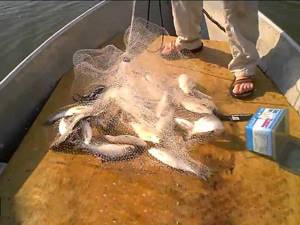
The structure will simultaneously serve as a sinker. But sometimes additional weight is used. After casting, the bait will sink to the bottom and the net will open. The fish will be attracted by bait. This is where the network hits.
If you see the float or rod tip twitching, you can pull it out.
According to reviews, these tackles are good because they do not require fishing skills. There is no need for hooking or other fishing tricks here. It’s convenient to take out the net at any time – and you don’t have to leave it for a long time. It is only worth remembering that in the fishing area there should be no snags or other objects on the bottom that the tackle can get caught on.
Types of feeders
The main advantage of fishing feeders is the ability to make them yourself, using improvised means.
Mesh feeders
Nowadays, mesh is the most common material for making feeders. Firstly, you can get it at any hardware store, both plastic and metal. Secondly, it is easy to work with, even while fishing.
- A fragment of approximately 4.5*10 cm is cut out of the mesh fabric. Dimensions may vary depending on what kind of fishing it will be used for.
- A strip of 2*10 cm is cut out from a piece of lead plate.
- Now the mesh is rolled up to form a cone or cylinder. The joint line is crimped with a lead plate.
- The final touch in making a feeder with a net for catching fish is to use wire to make a fastening through which the fishing line will be connected to the feeder.
If there is a problem with the mesh, you can make it yourself from a plastic bottle, from which you cut out a rectangular piece of a suitable size, roll it into a cylinder and make holes using a hot nail.
Wire feeders
They are used for fishing on water with little current. Their sizes can be different, since it depends on what cross-section of the wire was taken for work. The larger the diameter of the wire, the more spacious the fishing feeder. The spring model is considered the simplest and looks like a spiral.
Technology:
- Take brass and copper wire of small cross-section. You will also need a nut 1.5-2 cm in diameter (optionally, a steel rod).
- Using tools, wire is wound onto a rod; the number of turns should vary from 6 to 10 pieces, and the distance between them depends on what kind of food will then be placed in the feeder.
- The resulting spring is removed and using your fingers it is given a barrel shape.
- Next, a plastic or iron rod (tube) is installed inside the spring and the outer turns of the spiral are securely fastened to it.
For fishing on the river or at distances far from the shore, it is more rational to use a spring feeder made of rigid steel wire.
Plastic stopper in action
From available materials (an ordinary plastic bottle cap) you can prepare the simplest and fastest homemade fishing feeder, called a smoktukha or nipple. It is excellent for fishing for carp, carp, crucian carp, and bream.
- A round fragment with a diameter identical to the bottom of the plug is cut out of a piece of sheet lead.
- Using an awl (if you don’t have one, you can take a nail), two holes are made in the lead circle and the bottom of the lid.
- A soft wire is passed through the holes made so that the lead weight is on the outside, and the ends are twisted inside the plug.
- The next step is to use a nail to punch holes (3-4 are enough) on the side walls.
- A wire ring is attached to one of the holes, and leashes equipped with hooks are attached to the others.
- The final step is to prepare a dough of viscous consistency, which is used to fill the prepared teat feeder. Hooks are hidden in the dough. The point is that the fish, starting to suck the dough, will definitely swallow the hook with it and voila, your catch.
Now you know how to make a fishing feeder simply, quickly and using ordinary materials. But remember, they can get lost during fishing, so it’s better to prepare feeders for future use so as not to waste precious time.
What to make a fishing feeder from - video
Today’s article in the “Do It Yourself” section is truly dedicated to those who love and can make fishing tackle with their own hands. With this article we begin such an extensive section of the production of feeder gear as: creating feeder feeders with your own hands.
The following method for making feeder feeders may seem relatively difficult and requires a rather complex technology. But, as life tells us, there are many craftsmen in our country, and for them this is not such a difficult task.
And having managed to cast the shape of the weight for the feeder with your own hands, you will provide yourself and your friends with durable and cheap gear for the feeder.
Many may ask: why do this routine work? Well, first of all, as we already said: this is for those who want to do something on their own with their own hands. Secondly: when fishing, the consumption of feeder feeders can be quite high, and their prices, although not so high, but combined with other expenses that we make before each fishing trip, are still affordable.
When describing the production of forms for a feeder, it should be noted that here one of the variants of the form is presented, and you, based on your experience and the conditions of fishing on the feeder, can simplify or modify something.
At the beginning of any business, you need to carefully think through everything, collect the necessary material, tools, auxiliary equipment and determine the place for work.
So here's what we need.
Required material:
- steel blanks 2 pieces 60mm by 80mm, 10mm thick;
- two pieces of wire 6mm in diameter and 20mm long;
- auxiliary blank, 30mm by 80mm, 5mm thick;
- metal mesh with a cell of 4-6mm, depending on its structure.
Required tools:
- hacksaw for metal;
- drill, or better yet, a drilling machine;
- mites;
- hammer;
- anvil;
- scriber;
- punch;
- calipers;
- pencil and ruler;
- drills 6mm and 16mm,
- crucible (metal container) for melting lead;
- scales.
Beginning of work.
Let's start by selecting the necessary material, namely a steel bar, 60mm by 80mm and 10mm thick and an auxiliary 30mm by 80mm, 5mm thick. Let's make sure that the metal is soft (tempered); if not, then it is necessary to remove the hardening.
We cut two blanks 60mm by 80mm and one 30mm by 80mm.
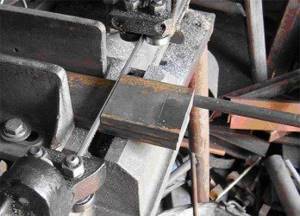
We will fold the prepared blanks so that the two main ones are on the outside, and the auxiliary one is in the middle and in the middle (sorry for the tautology, but I can’t describe it any other way), aligned along the length of 80mm.
We need an auxiliary blank to obtain an ellipse-shaped casting. This shape suits my fishing conditions and gives stability on the ground and the necessary strength to the feeder itself.
The resulting “sandwich” must be securely combined and secured, if possible, secured by welding at the ends.
Let's secure our assembly in a vice with the short side up. (see photo)
From the corners at a distance of 10 mm from the top and side, we mark the holes for future stoppers of the two halves of the molds. We core and use a 6mm drill to drill through holes.
We decide how we will tighten our forms. I suggest using stoppers, but you can also tighten them with M6 bolts, for example. To do this, you need to cut a thread on one of the sides. If you choose locking pins, cut 2 pieces of 6mm wire each 20mm long.
Immediately grind one side of the pins lightly to a length of 10mm, so that they fit into the holes without play. And drive the untreated 10 mm ones under the countersunk into one of the halves. If there is shat, boil the potai.
As a next step, we mark and core the middle point, our “sandwich”. We clamp it in a vice, paying special attention to the reliability and stability of the fastening.
Let's center the drilling machine so that the hole is strictly perpendicular to the top surface. Mark the immersion depth on the drill so that there is 3-5mm left before the drill exits. We'll go through it with a 6mm drill and then with a 16mm drill.
Let's unpack the details. We remove the 30 by 5mm plate. Combine the resulting two halves and clamp them in a vice again. Use a hacksaw to cut off the excess material, marking 16-17mm from the edge.
On top we leave hangers that are also 16mm. (see photo)
Then, for ease of casting, we make a countersunk hole and expand the neck with a 16mm drill.
We take the mesh for the feeder and cut out a strip of mesh approximately 50mm by 80mm.
Apply a 50mm edge to the side of one of the halves and mark the spots for the mesh. It is necessary to make symmetrical cuts on both sides of the form to the depth and profile of the mesh.
From suitable wire we will make an eyelet for attaching the feeder trough. And we’ll cut through two holes for this ear, ensuring a tight fit between the two halves. All that remains is to grind off the sharp corners and sand down the rough edges for ease of use.
Preparation of casting lead, tin
If we want to set up small production, then we need to prepare blanks for lead casting. Melt scrap lead in a strong bowl. Using a sliver, slightly tilting the dish, remove scale and other debris to the metal surface. Then, using a metal corner, we cast strips of lead.
Net with a feeder (feeder-trap). Fishing tackle review. How to catch it.
Review and recommendations for fishing with feeder-trap gear.
Now there are many offers on the Internet for the sale of a small net with a feeder , which can be cast either manually or using a spinning rod. At the same time, fish swimming up to the feeder and swimming around the bait should theoretically become entangled in this net. How to fish with this gear is not described in detail anywhere. It is only reported that you need to press complementary food into the spring feeder (a special mixture for bait or just millet or pearl barley porridge) and throw the tackle in shallow water and wait for a “bite”.
minigrid with feeder Chinese version
Since the design of the tackle is simple, you can make it yourself using a feeder and a piece of net fabric about 1.5 meters in size, or buy it from the Chinese via the Internet, where its cost ranges from 30 to 80 rubles per piece.
a trap-feeder net with a catch, a promised catch - American advertising.
There are a lot of opinions about this net, but one thing is for sure, with a fairly compact size, it combines the delights of fishing with biting, while the catch does not depend on the intensity of the fish’s hunger - the fish can only be caught by coming up to sniff the complementary food, while whether bait on a hook on a regular fishing rod - maybe she wouldn’t swallow it.
What kind and how many fish can you catch with this feeder-trap or, as it is now called, FindFish?
Russified instructions for fishing with a mininet with a feeder
The principle of fishing with a net with a feeder is not similar to a fishing scarf, but therefore the efficiency here is higher, since, unlike the wall of a scarf, this net catches in any direction - the fish will not pass along the canvas. The mesh is not loaded, sewn in the shape of a cone, used fluffed, i.e. it creates a net volume in which the fish feed on the food falling out of the feeder. In summer, the feeder can be equipped with a float and cast from the shore, in winter into a hole (see diagrams below). When fishing from ice, a net with a feeder is lowered into the hole to the bottom, and then raised by about 50 centimeters and left in this state, waiting for fish to fall into it. For sportiness, you can put it on a nod made of ordinary willow rod.
method of placing in a bundle vertically
Another way to install feeder nets is to place them in a bunch one above the other - the number depends on the depth of the reservoir. The length of the tackle can be increased directly on the water by attaching one feeder-trap to another. With this setup, the lower feeder with the net lies on the bottom, the rest are located at half-water and the upper one is almost on the surface. This installation option is also good because from the first fish caught you can understand at what level in the water column the fish is kept.
A predator often gets caught in such a net with a feeder, as it hunts for fish that feed near the feeder. To prove this, you can watch video reviews on our website, where you can see how both perch and pike perch are caught in the gear.
installation diagram of a mini-grid with a feeder under ice
Findfish feeder trap - where to buy, how to catch it and how to make it yourself.
By the way, of course, it’s easier to buy such tackle rather than make it yourself, but making it yourself is also not difficult at all - we make a springy feeder, which we fill with complementary foods and tie a piece of net fabric about a square meter in size to a swivel attached to its bottom.
Experience of use has shown that the effectiveness of this gear can be compared to all known fishing scarves. You can also fish with these nets and feeders in winter . The net with the feeder is lowered into the hole to the bottom, and then raised by about 40 centimeters and left in this state, waiting for a fish to fall into it. Among the inconveniences of winter fishing, it should be noted that before lowering the tackle into the hole, its edges must be almost perfectly cleared of ice, otherwise a lump of net will cling to it and in this situation it will be difficult to drown the net.
photo of a net with a feeder when fishing from ice in winter
catch - fishing in winter
Of the gear I know, it reminds me of the good old “pioneer” - a roll of netting with a piece of white foam, which was thrown into the water on a rope, the fish, thinking that it was food (bread for example), swam up to it to look and got tangled in the net, at that moment it was pulled out . Used mainly for catching bleak.
In the photo on the right is my catch in a net with a feeder on the first ice - I put one for testing - in 3 hours I caught 1 crayfish and 3 good roaches!
Conclusion: a mini-net with a feeder has its advantages in terms of compactness and an element of sportiness - a “bite” can be seen, an element of descent may be present. Good maintainability. Efficiency is very average. In addition, it should be recalled that the tackle is, of course, poaching.
I bought it by mail here https://ali.pub/27irhe for about forty rubles apiece in a batch of 4 different sizes of yak. Sent very quickly. Although you can make such a feeder-trap with your own hands, in my opinion it’s easier to take a ready-made one. Well, given the cheap price, take at least a dozen - then fishing will definitely be more fun.
As an option, such a mesh feeder can also be supplemented, for example, with a baby bird, as in the video below. Then, when catching live bait, you can additionally please yourself with a larger fish, which, as a rule, usually always manages to escape when the little fish rises...
Poscriptum . Fishing practice with a feeder net. Personal experience using a mesh feeder.
After playing with these devices a few times, I actually somehow abandoned them... But just last week we were fishing for bream - the bite was very bad - there was a feeling that the little thing was eating the bait, or the fish was very carefully trying what was on the hook...
I accidentally discovered 3 net traps in my backpack. I decided to try it.
I filled the feeders with porridge and lowered them to different depths: one net with a feeder at the bottom, the rest a meter higher. And... lo and behold! First one twitched, then the other! I'm dragging - a decent glander! Then 8 saberfish flew into the nets at once. As a result, in half an hour I caught about 4 kilograms of fish. During the same time, I managed to catch only one bream on the bottom. So the tackle, as I said above, can perform well under certain conditions!
If necessary, I will film and post a video here with instructions on how to fish correctly with such nets and feeders! Although there are actually a lot of them on YouTube - they mostly fish with a fishing rod or spinning rod - in open water and in a hole - in winter.

